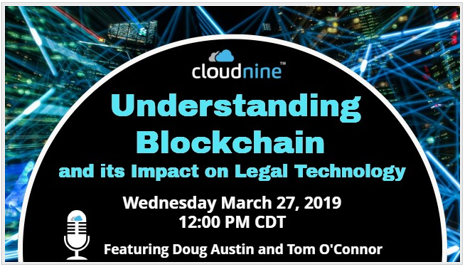Court Denies Plaintiff’s Motion to Compel Production of ESI Related to 34 Searches: eDiscovery Case Law
In Lareau v. Nw. Med. Ctr., No. 2:17-cv-81 (D. Vt. Mar. 27, 2019), Vermont District Judge William K. Sessions III denied the plaintiff’s motion to compel production of ESI related to 34 search terms proposed by the plaintiff during meet and confer with the defendant, based on the extrapolation from a single search term that the plaintiff’s production request would require 170 hours of attorney and paralegal time and would produce little, if any, relevant information.
Case Background
In this case related to claims of wrongful termination stemming (at least in part) from the plaintiff’s disability, the plaintiff initially asked the defendant to produce ESI using 18 search terms. Using only seven of those 18 terms, the defendant produced over 3,000 pages of documents and objected to the scope of the request. The plaintiff moved to compel, and the Court issued an order requiring the parties to confer and agree upon appropriate search terms.
The plaintiff subsequently proposed 34 search terms, some of which were in the original list to which the defendant had objected. The defendant informed plaintiff’s counsel that using just the first four of the proposed 34 terms, it had spent over 20 hours retrieving 2,912 documents totaling 5,336 pages. The plaintiff’s counsel later acknowledged in an email that the initial production was voluminous and unwieldy, and suggested that the defendant use only the newly-proposed search terms.
The defendant made another effort to comply, performing a search using the suggested term “Experian.” The process of searching, coding, and producing reportedly took five hours and identified 472 documents. the defendant represented to the plaintiff’s counsel that few of those documents were relevant. Extrapolating that work to 34 search terms, the defendant contended that the plaintiff’s production request would require 170 hours of attorney and paralegal time and would produce little, if any, relevant information. As a result, the defendant informed opposing counsel that given the burden of production and the limited relevance of the search results, it would not expend any additional time performing the requested searches. The plaintiff’s counsel invited the defendant to offer additional suggestions as to search terms, but the defendant declined that invitation, leading to the plaintiff’s motion.
Judge’s Ruling
Judge Sessions noted that, under the FRCP, “a party is required to provide ESI unless it shows that the source of such information is ‘not reasonably accessible because of undue burden or cost.’” With that in mind, Judge Sessions stated:
“Here, the Court ordered cooperation among counsel, and counsel’s efforts did not produce a workable solution. NMC has tried to comply and shown that, to date, the information sought using Lareau’s proposed search terms is not reasonably accessible. Indeed, NMC has expended considerable time and expense producing documents that reportedly have little relevance to this case.”
While noting that he “could nonetheless compel discovery for good cause shown”, Judge Sessions determined that “[h]ere, there has been no such showing.” Judge Sessions stated: “Since the Court issued its prior Order, NMC has produced 3,384 additional documents containing little relevant information. Without any showing that additional searches are likely to result in a higher rate of success, the Court will not order NMC to engage in further problem-solving.” As a result, he denied the plaintiff’s motion to compel.
So, what do you think? Was the defendant’s analysis of expected effort a valid representative sample? Please let us know if any comments you might have or if you’d like to know more about a particular topic.

Case opinion link courtesy of eDiscovery Assistant.
Sponsor: This blog is sponsored by CloudNine, which is a data and legal discovery technology company with proven expertise in simplifying and automating the discovery of data for audits, investigations, and litigation. Used by legal and business customers worldwide including more than 50 of the top 250 Am Law firms and many of the world’s leading corporations, CloudNine’s eDiscovery automation software and services help customers gain insight and intelligence on electronic data.
Disclaimer: The views represented herein are exclusively the views of the author, and do not necessarily represent the views held by CloudNine. eDiscovery Daily is made available by CloudNine solely for educational purposes to provide general information about general eDiscovery principles and not to provide specific legal advice applicable to any particular circumstance. eDiscovery Daily should not be used as a substitute for competent legal advice from a lawyer you have retained and who has agreed to represent you.







